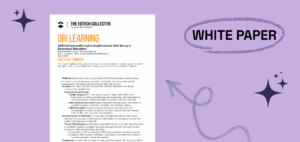Are you struggling to manage challenging classroom conduct effectively? Applied Behavior Analysis (ABA) might be the solution you need. ABA focuses on enhancing socially significant behaviors through systematic observation and data-driven decisions, making it a proven method in educational environments. This blog post will explore ten effective ABA behavior management strategies that can transform your teaching experience, improve student outcomes, and streamline your daily routines. Stick around to discover actionable techniques that can bring out the best in your students and reduce your workload.
Introduction to ABA Behavior Management Strategies
Applied Behavior Analysis (ABA) focuses on improving socially significant behaviors through systematic observation and data-driven decisions. This approach aims to reinforce desirable conduct while reducing unwanted ones. ABA is fundamentally important in behavior management because it provides structured strategies that are both measurable and adaptable to individual needs.
In general classroom settings, ABA behavior management methods are employed to manage and improve student decorum effectively. Teachers use techniques such as positive reinforcement, prompting, and behavior charts to encourage desired actions. By applying ABA strategies, educators can create a structured environment that promotes positive practices and academic success. This approach not only addresses behavioral issues but also helps in teaching new skills, making it an invaluable tool in educational settings.
ABA Behavior Management Strategies: Positive Reinforcement
Positive reinforcement involves rewarding desired behaviors to increase their occurrence. This principle is pivotal in Applied Behavior Analysis (ABA) because it helps in shaping and maintaining positive habits over time. When a student exhibits a desired behavior, they receive a reward that reinforces the likelihood of the action being repeated. This method leverages the natural human tendency to seek rewards and recognition, making it highly effective in various settings, especially classrooms.
The effectiveness of positive reinforcement lies in its ability to motivate and encourage students. Common rewards used in classrooms include verbal praise, tokens, and small treats. Verbal praise can be as simple as saying “Good job!” or “Well done!” Tokens can be part of a token economy system where students accumulate tokens to exchange for a larger reward. Small treats, such as stickers or extra recess time, also serve as effective reinforcements. These rewards not only promote desired actions but also help in building a positive classroom environment.
Five common positive reinforcements in classrooms:
- Verbal praise (e.g., “Great work!”)
- Stickers
- Tokens
- Extra recess time
- Small treats (e.g., candy)
To implement positive reinforcement effectively, teachers should follow a few practical tips. First, ensure that the reward is meaningful to the student; what works for one may not work for another. Second, be consistent in your application of rewards to maintain credibility and effectiveness. Third, provide immediate reinforcement to create a clear connection between the behavior and the reward. Lastly, gradually phase out tangible rewards and rely more on social reinforcements, like praise, to sustain the behavior long-term. Implementing these strategies can significantly enhance classroom management and student engagement.
Prompting and Fading Techniques
Prompting involves giving cues or assistance to encourage a desired behavior. There are various types of prompts used in ABA behavior management, including verbal, visual, and physical prompts. Verbal prompts are spoken instructions or cues, such as telling a student to “raise your hand.” Visual prompts include pictures, gestures, or written instructions that guide the behavior. Physical prompts involve physically guiding a student to complete a task, like helping a child hold a pencil correctly.
Fading is the gradual reduction of prompts until the individual can perform the practice independently. The goal is to minimize the assistance over time so that the student can achieve the desired practice without prompts. The fading process must be systematic and gradual to ensure the student does not become dependent on the prompts. Effective fading strategies involve slowly reducing the intensity, frequency, or type of prompt, making sure the student still successfully completes the behavior.
Teachers can apply prompting and fading techniques in the classroom to help students learn new skills and behaviors. Start by providing the least intrusive prompt that will still encourage the desired behavior. For example, use a verbal prompt before resorting to a physical one. Once the student begins to show improvement, gradually fade the prompts. This can be done by reducing the frequency of verbal cues or decreasing the level of physical assistance. Consistency and patience are key; the goal is to build the student’s independence while ensuring they feel supported throughout the learning process.
Task Analysis in ABA Behavior Management
Task analysis breaks down complex actions into smaller, manageable steps to facilitate learning. This technique is a cornerstone of ABA behavior management as it allows for systematic instruction and monitoring of progress. Task analysis is particularly effective in teaching daily living skills, such as personal hygiene, dressing, and academic tasks. By dissecting a complex skill into individual components, educators can provide clear, step-by-step instructions, making it easier for students to grasp and master the practice.
6 steps of a task analysis example for brushing teeth:
- Step 1: Pick up the toothbrush.
- Step 2: Apply toothpaste to the brush.
- Step 3: Turn on the faucet and wet the toothbrush.
- Step 4: Brush the top teeth in a circular motion.
- Step 5: Brush the bottom teeth in a circular motion.
- Step 6: Rinse the mouth and toothbrush.
Teachers can use task analysis to help students learn complex skills by first identifying the end goal and then breaking it down into smaller, sequential steps. Each step is taught individually, often using prompts and reinforcements to ensure mastery before moving on to the next. This method not only simplifies the learning process but also allows for tailored instruction to meet individual student needs. By tracking progress at each step, educators can provide targeted feedback and make adjustments as needed, ensuring that students achieve success in mastering complex behaviors.
Implementing Token Economy Systems
Token economies use tokens as a form of currency that can be exchanged for rewards. This strategy is grounded in the principles of ABA behavior management and is highly effective in promoting positive decorum in educational settings. Tokens can be tangible items like stickers, chips, or points recorded on a chart. The idea is to provide immediate reinforcement for desired behaviors, which can then be exchanged for a more substantial reward, thereby motivating students to repeat those behaviors.
Token economies work by establishing a clear connection between behavior and reward. When a student displays a desired habits, they receive a token. These tokens accumulate and can later be traded for a predetermined reward, such as extra recess time, a small toy, or a special privilege. The benefits of this system include increased motivation, immediate feedback, and a structured approach to behavior management. Token economies also help students understand the concept of delayed gratification and goal-setting.
5 steps to implement a token economy:
- Define the target behaviors that will earn tokens.
- Select the type of tokens to be used (e.g., stickers, chips).
- Determine the rewards and their token cost.
- Explain the system to the students, ensuring they understand how to earn and exchange tokens.
- Consistently apply the system, monitoring and adjusting as necessary.
Examples of token rewards that can be used in classrooms include extra playtime, a homework pass, a preferred activity, lunch with the teacher, or small toys. By implementing token economies, teachers can create a structured and motivating environment that encourages positive practices and academic engagement. This method not only reinforces desired conduct but also aids in the development of self-management and responsibility among students.
ABA Behavior Management Strategies: Extinction
Extinction involves withholding reinforcement for a previously reinforced behavior to reduce its occurrence. This technique is a fundamental component of ABA behavior management and is used to decrease unwanted behaviors by removing the reinforcement that maintains them. When the reinforcement is no longer provided, the behavior is expected to decrease over time. The primary goal of extinction is to break the association between the behavior and its reinforcement, leading to a reduction in the behavior’s frequency.
4 steps to apply extinction in a classroom:
- Identify the behavior to be reduced: Clearly define the specific behavior that needs to be decreased.
- Determine the reinforcement maintaining the behavior: Understand what is reinforcing the behavior, such as attention, tangibles, or escape.
- Withhold the reinforcement: Consistently refrain from providing the reinforcement when the behavior occurs.
Monitor and adjust: Track the behavior’s frequency and make necessary adjustments to the extinction plan.
Handling extinction bursts is a critical aspect of the extinction process. An extinction burst is a temporary increase in the undesired habits when the reinforcement is first removed. This can be challenging but is a normal part of the extinction process. Teachers should remain consistent and not give in to the behavior during this phase. Over time, the behavior will typically decrease as the student learns that the reinforcement is no longer available. Consistent application and monitoring are essential to successfully implementing extinction strategies in the classroom.
Functional Behavior Assessment (FBA) and Behavior Intervention Plans (BIPs)
Functional Behavior Assessment (FBA) is a method used to identify the reasons behind challenging decorum by analyzing antecedents, behaviors, and consequences. This approach helps in understanding the function of a behavior, which is crucial for developing effective intervention strategies. The primary elements of an FBA include identifying the target behavior, collecting data on the behavior, and analyzing the data to determine the function of the behavior. Understanding why a behavior occurs allows educators to address the root causes rather than just the symptoms.
Behavior Intervention Plans (BIPs) are developed based on the results of the FBA to address specific behavioral issues with tailored strategies. A BIP includes proactive strategies to prevent the occurrence of the behavior, teaching strategies to replace the undesired conduct with a more appropriate one, and reactive strategies to respond when the behavior occurs. The goal is to create a comprehensive plan that not only reduces the challenging behavior but also promotes positive behavior. BIPs are dynamic and should be regularly reviewed and adjusted based on the student’s progress and changing needs.
Teachers can use FBA and BIPs to manage classroom conduct effectively. By identifying the antecedents and consequences of challenging behaviors, teachers can modify the classroom environment to reduce triggers and reinforce positive behaviors. Implementing a BIP ensures that there is a consistent and structured approach to managing behavior, which helps in creating a positive and conducive learning environment. Regular monitoring and data collection are essential to evaluate the effectiveness of the BIP and make necessary adjustments to meet the individual needs of the student.
Data Collection and Analysis in ABA
Data collection involves recording the frequency, duration, and intensity of behaviors. This process is crucial in Applied Behavior Analysis (ABA) as it provides the empirical evidence needed to track progress and make informed, data-driven decisions. Accurate data collection allows educators and behavior analysts to understand behavior patterns, identify triggers, and measure the effectiveness of interventions. Without consistent and precise data, it would be challenging to assess whether a particular strategy is working or needs adjustment.
5 types of data collected in ABA:
- Frequency: The number of times a behavior occurs within a specific period.
- Duration: The length of time a behavior lasts from start to finish.
- Intensity: The force or severity of the behavior.
- Latency: The time elapsed between a prompt and the onset of the behavior.
- Inter-response time: The time between consecutive occurrences of the behavior.
Data analysis helps refine ABA strategies by providing a clear picture of behavior trends and intervention outcomes. By analyzing collected data, behavior analysts can determine the effectiveness of current interventions and make necessary adjustments to improve outcomes. This systematic approach ensures that strategies are tailored to meet individual student needs, increasing the likelihood of achieving desired decorum changes. Data analysis also facilitates communication with stakeholders, such as parents and teachers, by providing concrete evidence of progress and areas needing improvement.
More on ABA Behavior Management Strategies
Behavior management in ABA focuses on improving socially significant behaviors by observing and making data-driven decisions. It is widely used in educational settings to manage behavior and teach new skills.
How are ABA strategies applied in the classroom?
In classrooms, ABA strategies are used to manage behavior and enhance learning. Teachers use techniques like positive reinforcement, task analysis, and token economies to create a structured and supportive learning environment.
Parents can use ABA techniques like positive reinforcement, task analysis for daily routines, and creating token economies for chore completion. These methods help improve behavior and skills in a home setting.





